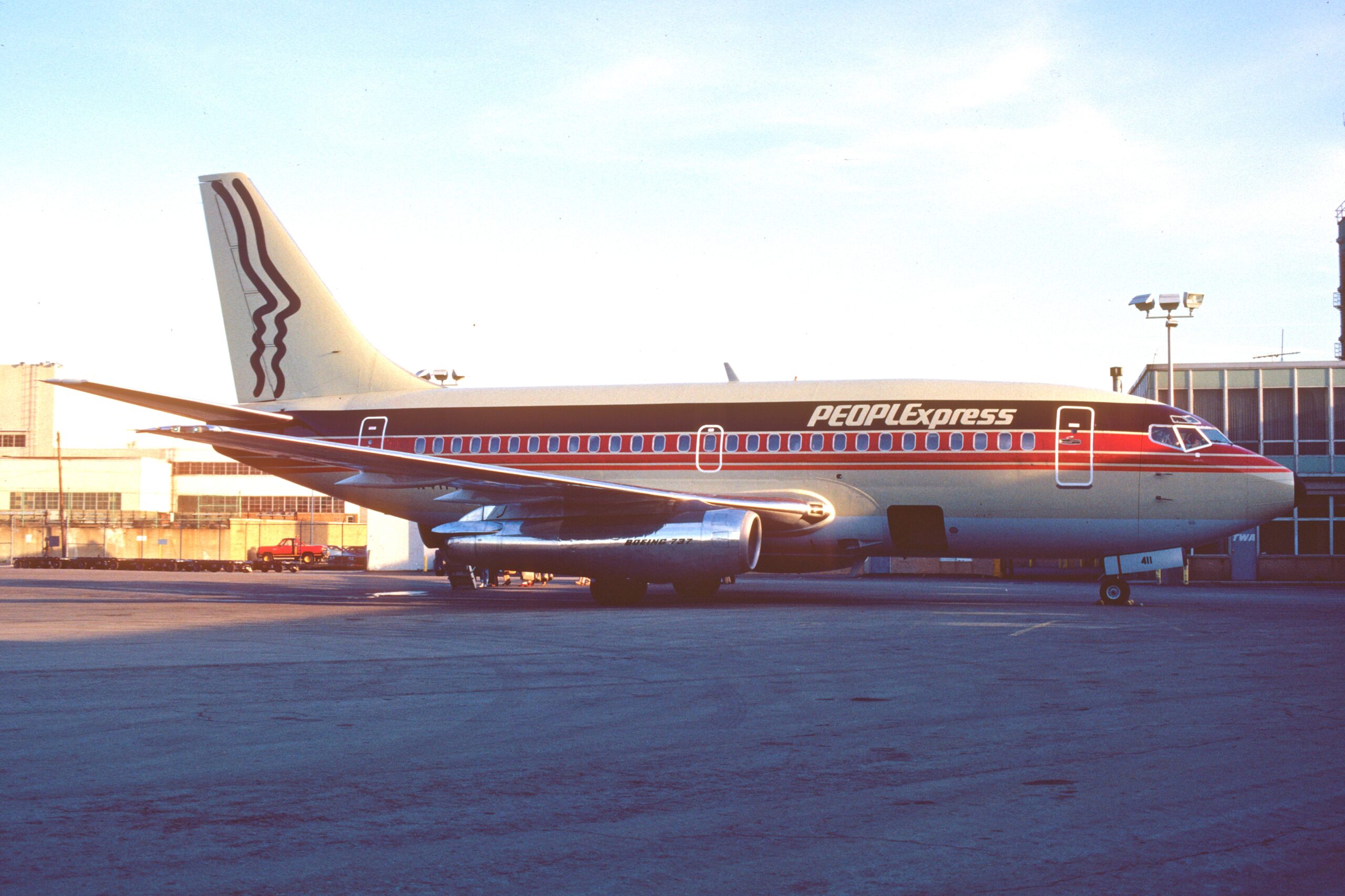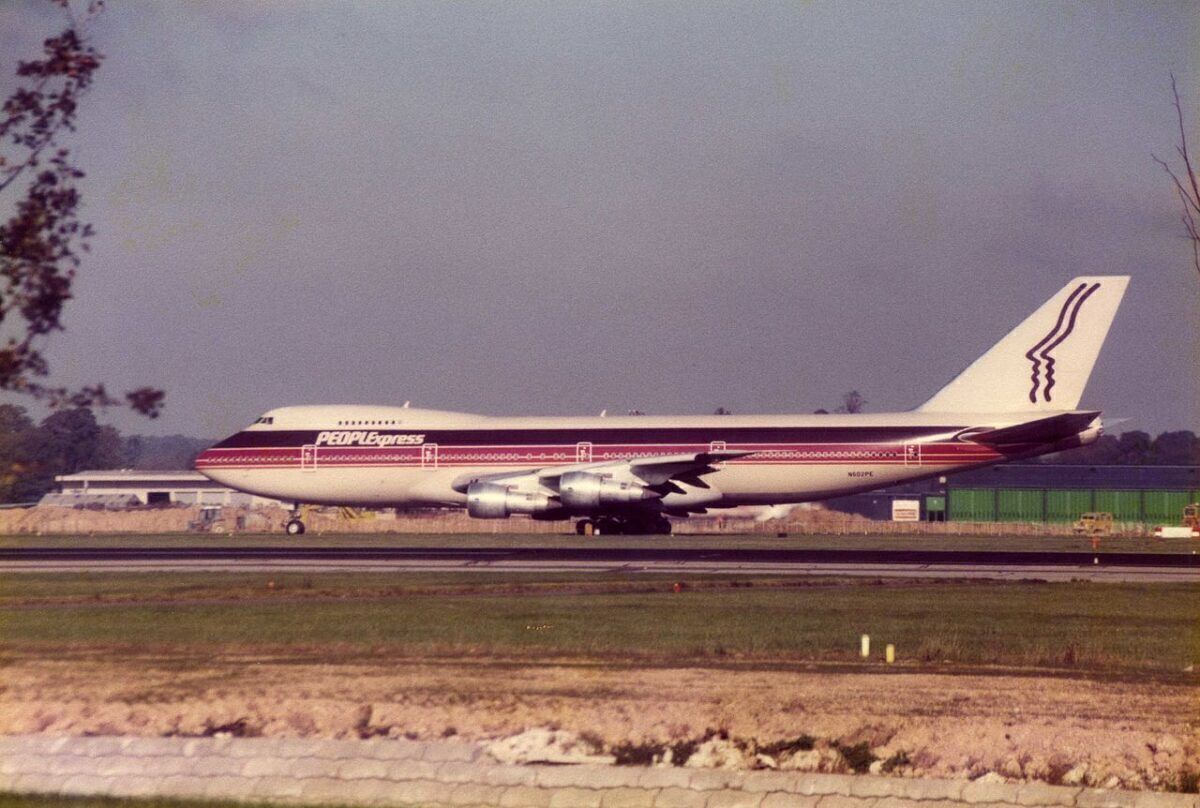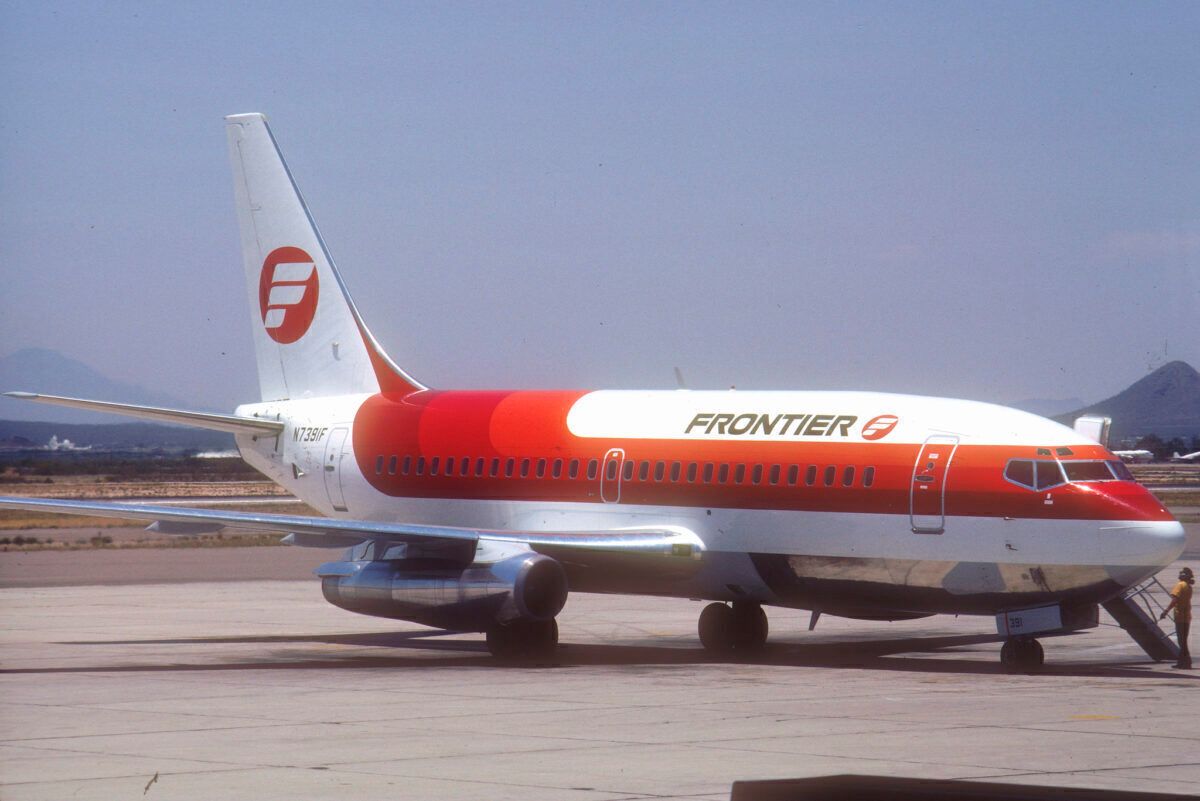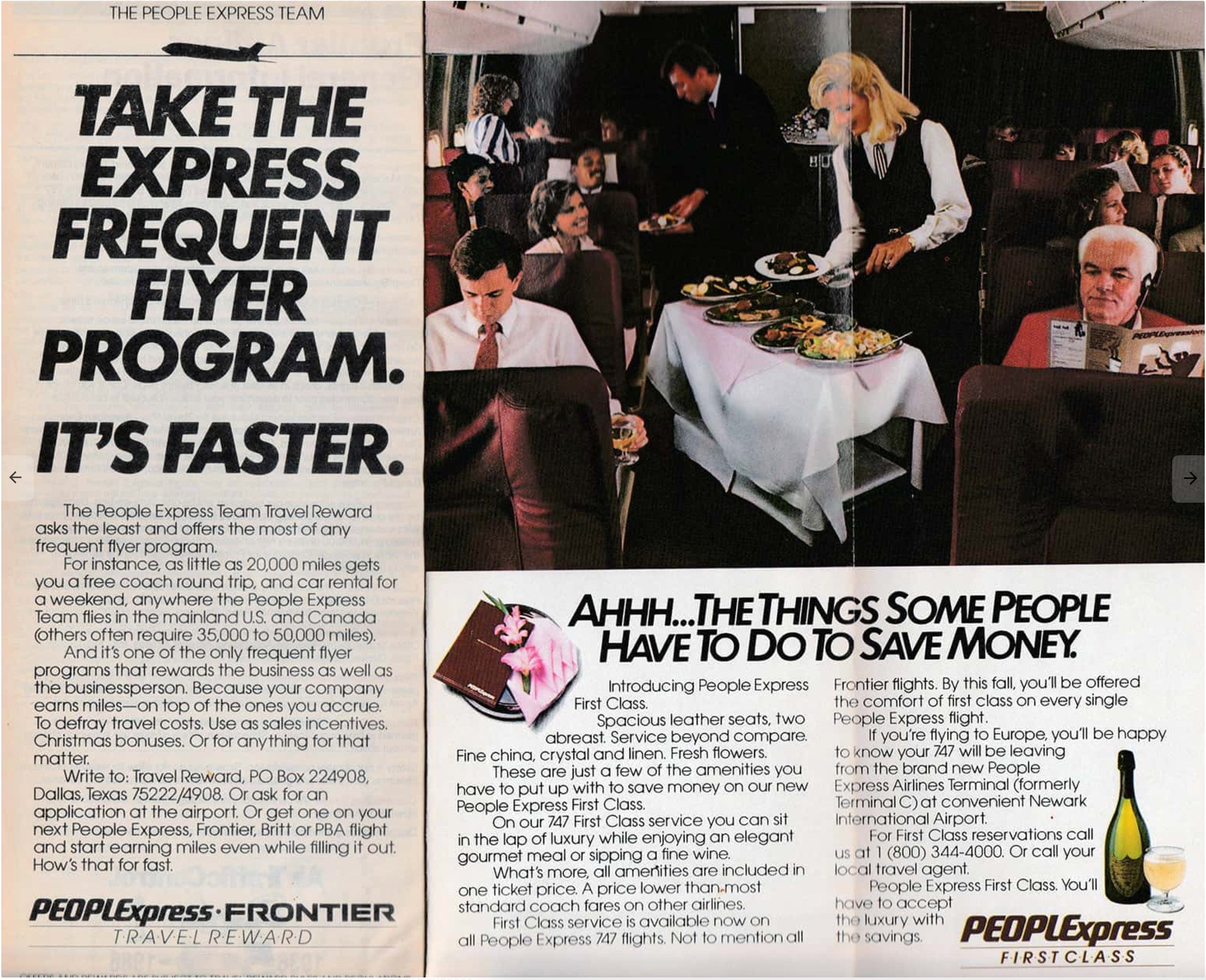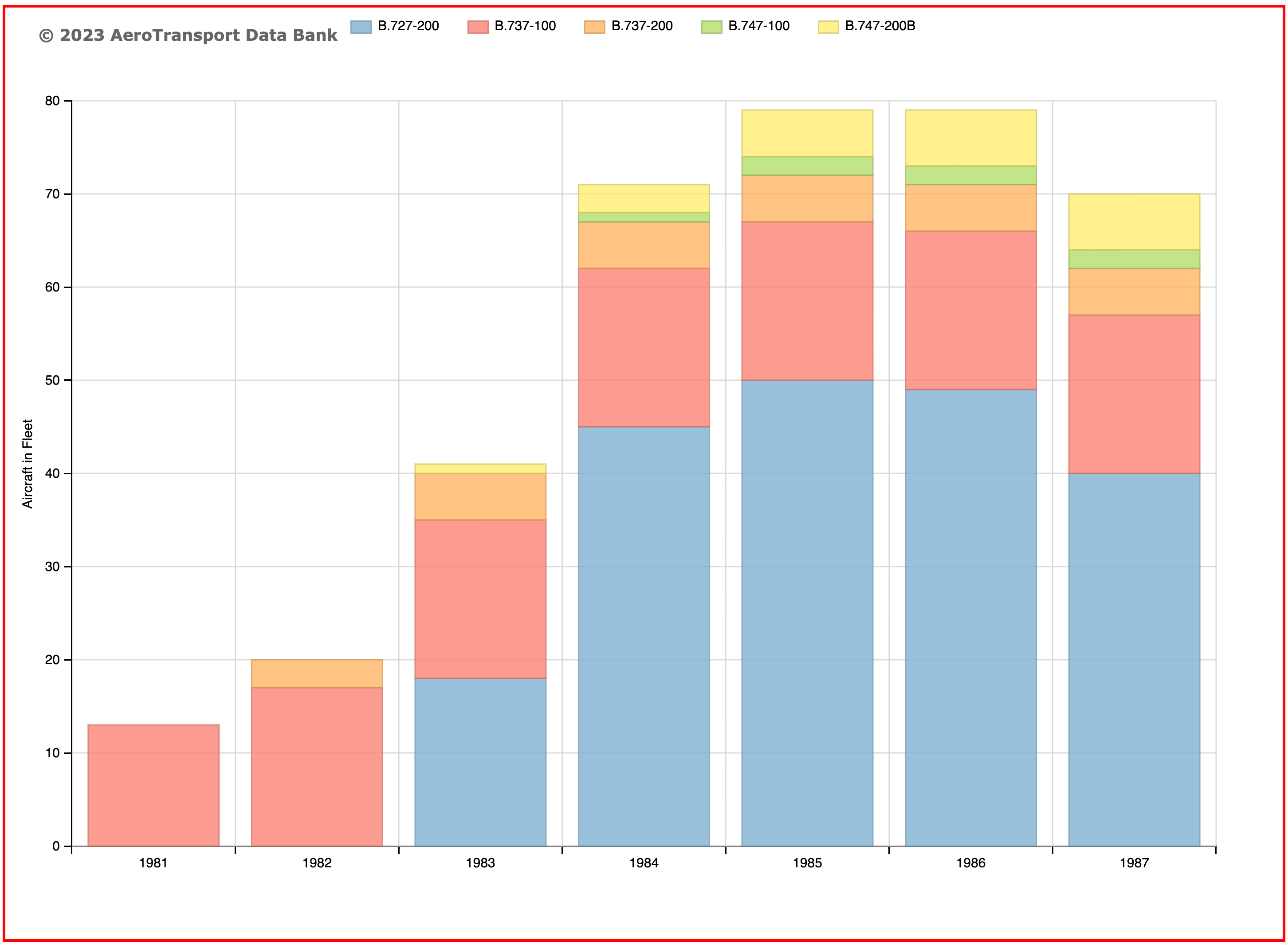Summary
- People Express utilized a unique workforce model, making employees owners of the airline and maximizing employee productivity rates.
- The airline unbundled air travel perks, allowing passengers to pay for only what they wanted, which helped keep ticket prices low.
- People Express grew rapidly but faced financial troubles after buying Frontier Airlines, straying from its low-cost roots, and targeting higher-end business travelers.
Back in the ’80s, an airline in the States became the first major to charge passengers to check their bags. It had a unique workforce model that gave it the highest productivity rates in the industry. It even had one of the first products that could have been called premium economy. People Express had all the right ingredients to become a great low-cost carrier; ultimately, it was gone just five years after it launched.
People Express started out with Boeing 737s
Launched in the corner of Newark Liberty International Airport (EWR) in an abandoned terminal in 1981, People Express (stylized PEOPLExpress) was the brainchild of former Texas International Airlines CEO Don Burr. Inspired by Britain’s Freddie Laker and his low-cost Skytrain flights, People Express offered fares lower than its competitors.
It could do this by making its employees owners of the airline. This meant that, no matter your title, you would help wherever necessary. Pilots would help load luggage, while sales personnel would help at the check-in counters. This allowed People Express to have one of the highest employee productivity rates in the industry.
The airline launched using four Boeing 737-100s, previously of Lufthansa. People Express first flew from Newark to Buffalo, New York, before adding flights to Columbus and Cleveland, Ohio, Norfolk, Virginia, and Jacksonville, Florida. By December of 1981, People Express had 42 weekday departures to destinations up and down the East Coast and Midwest.
The ticketing system was also unusual by today’s standards. There were no ticket desks, and people proceeded directly to the assigned gate. Once the baggage was checked, they received a plastic boarding pass indicating the boarding group, but none of the seats were assigned. The cabin crew came through after take-off to collect the fare in cash, with the price being fixed based on the route and peak travel dates.
Passengers paid à la carte
Unbundling the various components of air travel, People Express allowed passengers to pay for what they wanted and, more importantly, not pay for what they did not wish to. One carry-on item was free, but if you wanted a checked bag, it would cost you $3. Likewise, the food and drinks that other airlines included in their fares were add-on items with People Express, who charged a dollar for a beer and 50 cents for a can of soda.
People Express gambled that passengers without baggage and those not keen on airline food would be prepared to fly no-frills to save big on the airfare. For the first three years in business, it looked like Burr and the others who set up the airline were right. For once, following the deregulation of the industry, People Express was letting the marketplace dictate the policies and prices. Not only was it offering low-cost tickets, but it was also forcing other airlines to cut their ticket prices as well.
This unbundling of air travel perks was groundbreaking for its time. No other major airline in the US was making people pay for things like bags and food at the time – and that’s not the only modern-day low-cost carrier strategy it employed. People Express also fully embraced the benefits of densification, packing as many passengers in all-economy as it could.
Basing its strategy on landing in overpriced, underserved cities and undercutting the prices of the existing carriers, People Express was a huge success. It delivered 1.5 billion revenue miles in its first year, according to Airways Magazine, and increased this almost tenfold in just three years, flying almost 11 billion revenue miles in 1985. Using the higher-capacity Boeing 727-200s helped spur this growth, with the airline ordering 20 former Braniff aircraft for $4.2 million each in March 1983.
Low-cost long-haul, in the ’80s
People Express became a household name in air travel when it introduced $149 one-way flights from Newark Liberty to London Gatwick (LGA) on May 26, 1983. Using a leased former Braniff International Airways Boeing 747-200, People Express flights to London were an instant hit, with services almost always fully booked. Former CFO of People Express, Bob McAdoo, told The Street of the flights,
“We started out with one 747 a day and went to two a day. We were able to put about 450 seats in it, which is why our costs were so low per passenger. It’s the technology and the decision to pack the seats in so that you maximize the number of passengers on a plane, which enables you to have really low costs.”
But the transatlantic flights saw People Express slipping away from its low-cost roots, at first through an offering of a slightly more spacious ‘premium class’ – a forerunner of today’s premium economy perhaps. That move away from the ‘everyone’s equal’ pricing it had stuck to since launch was a signal of what was to come, but not before it made some critical mistakes.
People Express bought Frontier Airlines
The airline was having a tough time staying competitive in all its markets. As it moved into bigger markets, the incumbents responded by aggressively lowering fares, sometimes at even below cost levels, in a bid to retain market share. Employee relations were becoming strained, and overcapacity was beginning to bite, which saw the airline posting its first loss in the final quarter of 1984.
Keen to shake things up, 1985 saw the airline stray even further from its low-cost heritage, introducing ticketing by mail, inflight magazines, complimentary onboard snacks and drinks, and free baggage. It was now competing with incumbents not only on price, but also on service, and it was tough.
But rather than pull back and save cash, People Express looked to grow even more aggressively, purchasing Denver-based Frontier Airlines for $300 million in late 1985. Frontier’s CEO would later go on to form the present Frontier Airlines in 1994.
At the time, Frontier was on its last legs following a bitter fare war with United and Continental that Frontier was losing. People Express’s deal had analysts wondering if the carrier had made a brilliant business move or a massive blunder. In hindsight, the end result was the latter.
Buying Frontier Airlines not only burdened People Express with debt it could barely manage, but it also alienated Frontier Airlines passengers with its no-frills approach and caused labor struggles with Frontier Airlines employees.
People Express went upmarket
With its heavy debt load, People Express changed its philosophy to begin luring lucrative business travelers. Cabins were redesigned to include a first class section, and a frequent flyer program was introduced – People Express wanted to keep up with the times. But first class not only means higher fares; it also means added cost and complexity. Passenger load factors declined – after all, why would they fly with People Express when they could choose one of the more ‘established’ airlines instead?
In the end, massive debt proved to be the downfall of People Express, with the airline forced to work with an investment bank as it looked for a buyer and a way out of trouble. The airline and its debts were bought by Texas Air Corporation – the same company Burr had left to set up People Express – for $125 million in cash. The airline formally ceased to exist on February 1st, 1987, when all its operations and assets were merged into Continental Airlines.
The People Express fleet
The airline flew 83 different aircraft over the six years of its operations, according to ATDB.aero. All bore the signature livery featuring two facial profiles on the tail. On the narrowbody side, it flew 50 Boeing 727-200s along with its 22 Boeing 737 Classics. It had 11 different Boeing 747s in the fleet over its short lifespan, too.
It seemed like People Express had all the right components to make a splash in the US market, but stretched itself beyond its capabilities too soon. Had it remained a domestic US airline, focusing on those underserved routes, the outcome may have been different. But despite its short-lived existence, the innovation at People Express set the bar for low-cost carriers everywhere and showed the American market just what no frills was all about.
Did you ever get to fly with People Express? If so, please tell us what you think about them in the comments.

